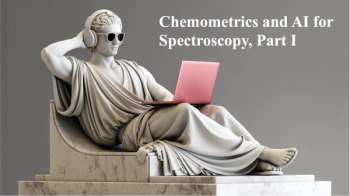Key Points
- A recent Food Chemistry review article highlights how chemometrics-enhanced spectroscopy offers a faster, non-destructive method to detect phenolics and vitamins in foods.
- Key challenges include limited calibration data, overlapping molecular fingerprints, and food matrix effects that hinder model accuracy and spectral clarity.
- The authors recommend integrating advanced preprocessing, machine learning, and data fusion strategies to improve detection reliability and expand real-world applications.
A recent review article published in the journal Food Chemistry investigated and documented about the role that chemometrics-enhanced spectroscopic techniques are playing in detecting phenolics and vitamins in plant- and animal-based foods (1). This study, which was led by Quansheng Chan of Jimei University and Jiangsu University, looked at the current progress, major challenges, and future opportunities in this application area. The review underscored the significance of the physiological roles bioactive compounds play in human health (1).
What Are Phenolics and Vitamins?
Phenolics and vitamins are bioactive compounds essential for antioxidant activity, immune response regulation, and disease prevention (1,2). However, an ongoing problem is that traditional methods for detecting these compounds are destructive, expensive, and time-consuming. As a result, spectroscopic techniques are beginning to be used with chemometric modeling to detect these compounds. Some examples of the techniques being used include infrared (IR), Fourier transform-near infrared (FT-NIR), mid-infrared (MIR), ultraviolet-visible (UV–vis), fluorescence, and Raman spectroscopy (1).
What Are The Benefits of Phenolics and Vitamins?
The study begins by outlining the key physical properties and physiological benefits of phenolics and vitamins. These compounds, though vital, are structurally diverse and interact dynamically with other food matrix components, which complicates their detection and quantification (1). The review describes how various spectroscopic techniques work and details sample preparation protocols essential for obtaining reliable data.
Integrating chemometrics, which is a branch of multivariate statistics used for analyzing chemical data, to build robust predictive models from spectroscopic inputs (1). Over the past five years, considerable progress has been made in developing such models, especially for simultaneous and single-component detection of phenolics and vitamins. Among these methods, spectral preprocessing combined with feature extraction-based quantitative models emerged as the most encouraging (1).
What Are the Challenges of Building Reliable Chemometrics Models?
There are several challenges in building reliable chemometrics models, which the authors document in their review. First, there is limited availability of high-quality calibration data (1). The second challenge is that despite hundreds of phenolics and vitamins being identified, only a fraction are currently measurable using available spectroscopic techniques (1). The third and final challenge is the complexity of molecular structures and functional groups, which often leads to redundant or overlapping molecular fingerprints (1).
How Can Researchers Address These Concerns?
Researchers can help address these concerns by developing rigorous sampling techniques. They also recommend developing regularization methods to prevent overfitting, as well as robust validation protocols (1).
In addition, the food matrix effect, wherein complex interactions among compounds result in increased scattering and reduced spectral clarity, poses another challenge (1). The researchers suggest the following solutions, which include optimizing clean-up procedures, improving spectroscopic conditions, and applying advanced preprocessing techniques (1).
Multilinear spectral data and subtle spectral differences further complicate the detection process. Principal component analysis (PCA), ridge regression, Bayesian modeling, and least absolute shrinkage and selection operator (LASSO) regression could be potential solutions to this problem (1). This is because these tools enhance model interpretability and accuracy by minimizing the impact of multicollinearity in spectral data sets (1).
What New Advancements Are Happening In This Space?
The researchers mention that using colorimetric e-nose and e-tongue systems for monitoring phenolics is growing in popularity. This trend demonstrates that multi-analyte detection methods, powered by machine learning and deep learning algorithms, are being used alongside data fusion strategies to deliver a more holistic and scalable solution (1).
However, even though progress has been made in this space, the authors conclude their article by discussing how the real-world application of chemometrics-powered spectroscopy remains limited (1). The authors state that more studies are needed to improve chemometrics-powered spectroscopy techniques in analyzing a larger array of phenolics and vitamins (1). The researchers called for greater investment in building high-quality data sets and developing integrated platforms for field-level deployment (1).
References
- Hassan, M. M.; Xu, Y.; Sayada, J.; et al. Chemometrics-powered Spectroscopic Techniques for the Measurement of Food-derived Phenolics and Vitamins in Foods: A Review. Food Chem. 2025, 473, 142722. DOI: 10.1016/j.foodchem.2024.142722
- Orsavova, J.; Sytarova, I.; Mlcek, J.; Misurcova, L. Phenolic Compounds, Vitamins C and E and Antioxidant Activity of Edible Honeysuckle Berries (Lonicera caerulea L. var. kamtschatica Pojark) in Relation to Their Origin. Antioxidants 2022, 11 (2), 433. DOI: 10.3390/antiox11020433






